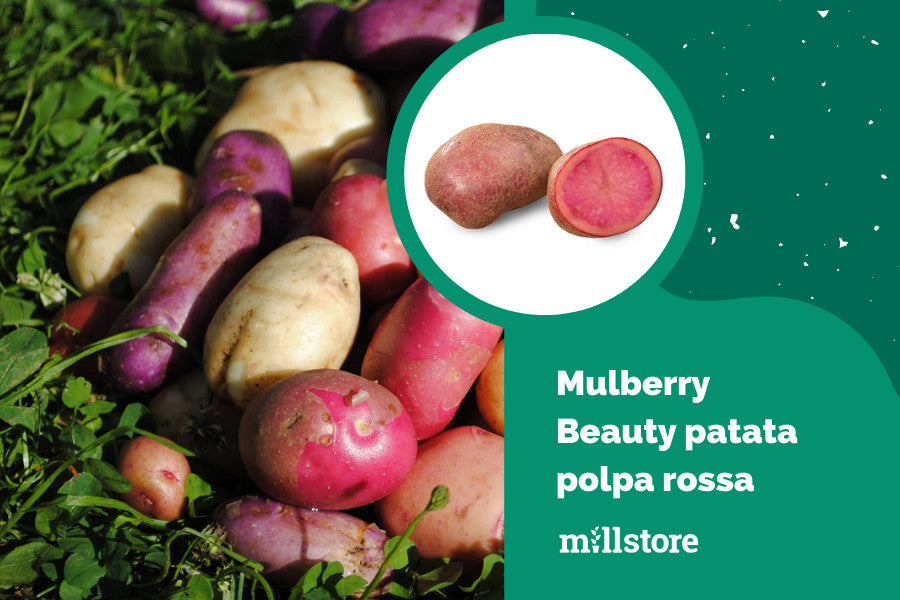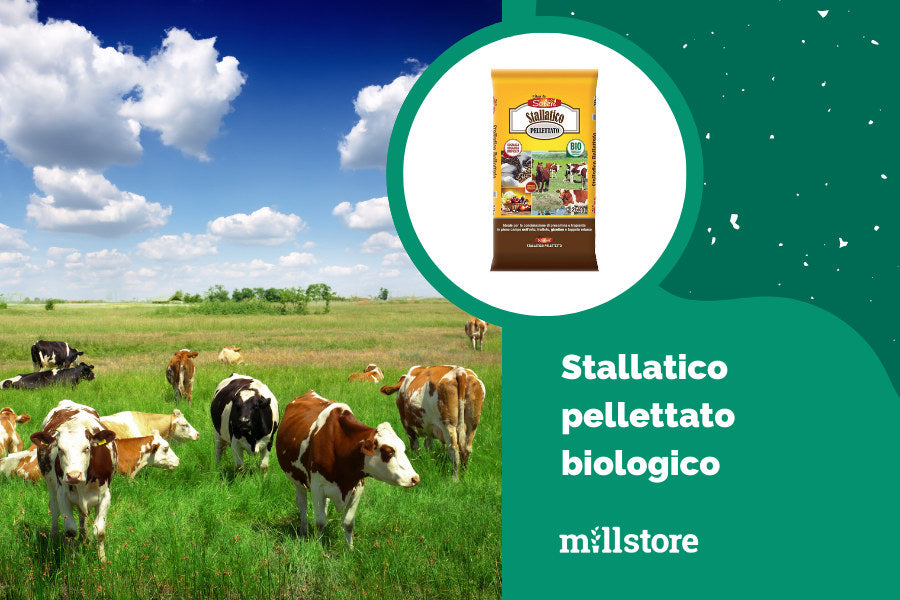Originally from Peru, Bolivia and Mexico, where it was cultivated since the time of the Incas and Aztecs, it was discovered by the Spanish of Pizarro, in the Andes mountain range, only in the mid-sixteenth century.
The first Europeans who tasted it said that its taste resembled that of chestnuts.
It arrived in Italy in the second half of the 16th century thanks to the Discalced Carmelite Fathers , who apparently taught not only how to grow and harvest it, but also how to eat it (for example sliced or fried and breaded). We are talking about "his majesty the potato" .
In our country, despite some famous scholars including Alessandro Volta trying to exalt its qualities, in the mid-nineteenth century it was not so appreciated and, in fact, in the recipe books of the time it was still scarcely present and in any case associated with the cuisine of the poor.
Today, in addition to being appreciated by adults and children, it is an integral part of our table and the basis of many recipes , even haute cuisine, both for its versatility and for its nutritional values.
In fact, this tuber, with 80 kcal per 100 g , is less caloric than bread (270 kcal) and pasta (346 kcal).
Would you like to grow it in your garden but you don't know how to go about choosing and what precautions to take for sowing, fertilizing and harvesting?
Today we are talking about seed potatoes, one of the main varieties of seed potatoes .
In particular, in this article we will see:
- What are the best potatoes?
- The characteristics of the potato sprout
- How to grow sprout potatoes
- How to choose the best sprout potatoes
What are the best potatoes?
A nutritious and easy-to-grow tuber, potatoes should be a staple in any garden.
If you want to grow this vegetable you must first know that, generally, you don't start from the seed, but you plant the tuber directly .
You could also decide to plant potatoes bought at the supermarket, but this is a highly discouraged option while it is advisable to buy from a trusted retailer who can guarantee an extremely high quality product.
No one forbids you, if you have already been growing potatoes for a few years, to preserve your tubers and become self-sufficient. However, it is preferable to periodically renew the original seed also for the pleasure and satisfaction of experimenting with different species and savoring their multifaceted flavors.
You should also know that this tuber can transmit diseases , particularly viruses.
From this point of view, seed potatoes differ from those we are used to because they are rich in some substances useful for solving the problem of the formation of microorganisms or bacteria potentially harmful both for the plant and for our health.
In addition to this, potatoes specifically for sowing have selected quality and flavor characteristics. However, their production requires a suitable climate that is quite difficult to find in Italy.
If you want to start a crop, you should opt for Dutch seed potatoes , such as those selected by Millstore in its fifty years of experience and which you can receive directly at home.

The characteristics of the potato sprout
First of all, keep in mind that there are different varieties of seed potatoes that differ, among other things, in color, pulp, uses in cooking and maturation time.
Seed potatoes are characterized by their extreme resistance to diseases typical of this tuber and, for this very reason, they are used extensively in organic farming.
They also ripen quickly and are very tasty .
The tappa is a medium-early variety (90-120 days) , which does not keep well (the one commonly called new potato) and is characterised by:
- The light yellow flesh and beige skin
- A typical elongated shape and firm paste with floury and grainy pulp
- Not very suitable for being crushed and used as an ingredient due to its particular consistency. Excellent, however, to be used as a side dish or main dish . It is perfect, for example, for baking.
This species adapts well to various growing environments but, due to the climate, it is ideal for growing in the southern regions and on the islands .
To obtain 100 m2 of plantation, you will need to use approximately 20-25 kg of seed potatoes , which will be reduced by half if you decide to cut the potatoes before planting them.
The sprout is very productive with a yield of between 250 and 500 kg per 100 m2 .
How to grow sprout potatoes
First of all, it is essential to identify the right time for planting. Sprouting potatoes must be planted between late winter and early spring depending on the climate region where you are .
If you grow in the South, where mild temperatures arrive earlier, you can start as early as March; if you are in the North, you will have to wait for the end of the cold to avoid frosts ruining the plants (the temperature must reach at least 10°C).
Let's now see the operations you will have to carry out to grow sprout potatoes successfully .
Soil preparation and fertilization
First of all you will have to prepare the soil so that it is well loosened, worked in depth using the right tools and appropriately fertilized . The soil should be worked the previous autumn or, in any case, before sowing.
As far as fertilization is concerned, potatoes are one of the most demanding vegetables in terms of nutrients, so to obtain a good harvest, you absolutely cannot neglect this aspect.
You will therefore need to start with an excellent basic fertilization and continue at the time of sowing and throughout the initial growth period.
The essential elements for potatoes are nitrogen, which will help the plant to develop well, while phosphorus and potassium will be useful for the formation of tubers.
For basic fertilization , which you must do before planting the tubers, you can use compost or mature manure (about 4-5 kg per m2) to mix well with the soil to make it softer.
Be careful to incorporate them into the first 20-30 cm at most because this is where most of the roots will be found.
For convenience, during the cultivation phase in which you will have to replenish other fertilizer, both during planting and in the first growth period of the plant (i.e. when it reaches 15-20 cm) you can opt for an organic pelleted manure .
If you have a fireplace at home, save the wood ash , which is rich in potassium, and "dust" it over your potatoes.

How to sow sprouting potatoes: spacing and companion plants
When sowing sprouted potatoes, remember that, as they are rather early varieties, you will have to respect a distance of about 50-70 cm between the furrows and 25-35 cm on the row (unlike the later ones which instead require about ten centimetres more space) and bury the tuber at a depth of 10 cm (the position does not matter).
You can sow both whole potatoes and pieces of tuber, but only if the potato exceeds 50 grams . If you choose this second option, remember that each piece you plant must exceed 20 grams, have at least two buds (also called eyes) from which the new plant will grow.
It will also be essential to cut the potatoes into wedges so as not to damage the sprouts . Let the cut dry for at least 6-12 hours before sowing.
If you are planning your vegetable garden, keep in mind that useful companion plants for potatoes are beans, peas, cabbage and sunflowers.
As we have already mentioned, sowing should be done between late winter and early spring depending on the geographical area in which you grow, taking into account that the ideal temperature is between 12°C and approximately 20°C and should never fall below 10°C.
Especially if you want to grow an organic garden, it will be essential to rotate crops every 3-4 years, avoiding planting potatoes in land where a Solanaceae, a plant from the same family, had previously been grown.
What happens if you don't earth up the potatoes?
Earthing up, that is, moving a little soil towards the base of the plant , is one of the operations that you cannot omit to carry out for the success of your cultivation.
You will need to make two reinforcements :
-
The first, light, when at least half of the plants have put out leaves . Consider that after 15-20 days from sowing the first two leaves will appear and the shoots would be damaged in case of frost. The earthing up has the aim of burying the leaves to protect them .
This operation also allows you to eliminate the first weeds and force the plant to lengthen its stem, thus increasing the production of stolons and therefore potatoes.
-
The second earthing up, about a month after the first , will be the occasion to add a little fertilizer. The goal is to create a mound of soil on the plant of about 30 centimeters to protect the tubers from the sun .
You should know that direct light causes the production of solanine, a poisonous substance, and that potatoes, with the sun's rays, turn green and are not edible.
So be careful not to skip these two steps or your work will be wasted.
When and how to water sprout potatoes
As for watering, the most suitable systems are the sliding ones or the drip irrigation systems .
Water your sprouting potatoes early in the morning when temperatures are cooler. This is important to keep the plant healthy, as mildew, a fungal disease, may be lurking at 18°C.
The periods of greatest water requirement are when the buds appear and then at the end of flowering . Usually in spring, if the season is rainy, you will not have to water further.

When to harvest potatoes and how much they yield
The time of harvest varies depending on the type of result you want to obtain. If you prefer new potatoes you will have to proceed when the tuber is still green , otherwise, for normal potatoes, which allow for longer conservation, you will have to wait for the plant to dry out and turn yellow completely.
Since the ripening time can be subject to variables such as the climate and the year for example, to avoid making mistakes, do this simple test: rub the peel of the potato, if it does not come off easily, the time is right .
For the harvesting operation we recommend using a fork with which you will lift the clod of earth under the plant and where you will find your beautiful tubers at the roots.
On average, you will get 3-4 kg of potatoes per square meter grown .
How to choose the best sprout potatoes
We have seen what are all the main precautions to follow to obtain a good production of sprouted potatoes: the preparation of the soil, correct fertilization, identifying the right time for sowing, choosing the most suitable friendly associations, earthing up the soil, providing the right amount of water and harvesting at the right times, will allow you to achieve truly satisfying results.
However, the first essential step, as mentioned at the beginning of this article, is to choose seed potatoes rather than the common potatoes you find at the supermarket .
For this reason, turning to a reliable dealer who can advise you on the types best suited to your needs and your climate is undoubtedly the winning choice.
If you wish to receive information or support , Millstore experts are at your disposal by phone, email, WhatsApp or on the website chat to answer all your questions and to guide you in the varied world of seed potatoes.



